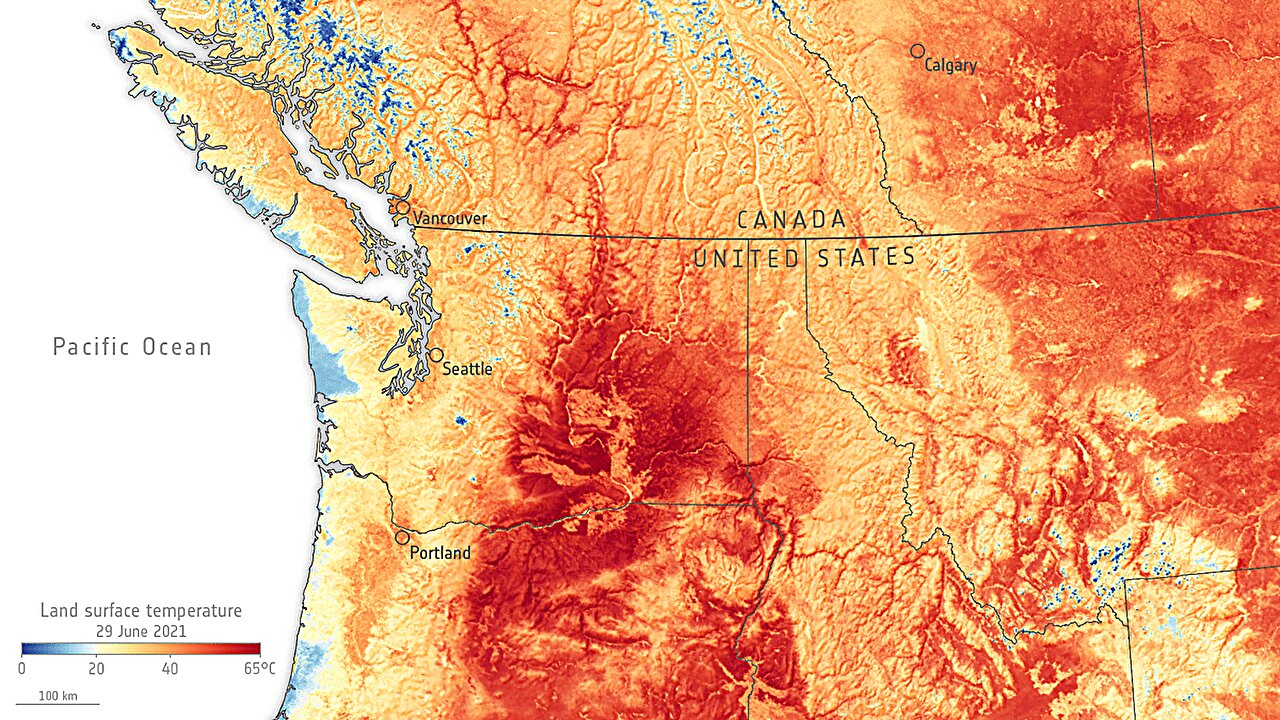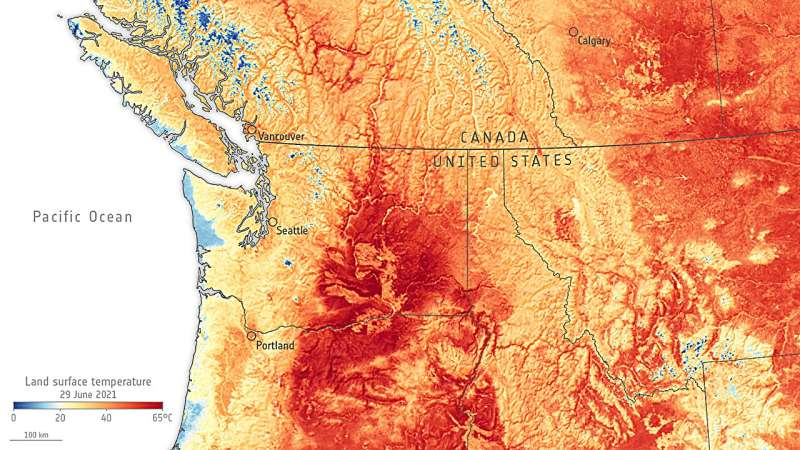

Because small changes in atmospheric and surface conditions can have large, difficult-to-predict effects on future weather, traditional weather forecasts are released only about 10 days in advance. A longer lead time could help communities better prepare for what’s to come, especially extreme events such as the record-breaking June 2021 U.S. Pacific Northwest heat wave, which melted train power lines, destroyed crops, and caused hundreds of deaths.
Meteorologists commonly use adjoint models to determine how sensitive a forecast is to inaccuracies in initial conditions. These models help determine how small changes in temperature or atmospheric water vapor, for example, can affect the accuracy of conditions forecast for a few days later.
Understanding the relationship between the initial conditions and the amount of error in the forecast allows scientists to make changes until they find the set of initial conditions that produces the most accurate forecast.
However, running adjoint models requires significant financial and computing resources, and the models can measure these sensitivities only up to five days in advance. Researchers tested whether a deep learning approach could provide an easier and more accurate way to determine the optimal set of initial conditions for a 10-day forecast.
The findings are published in the journal Geophysical Research Letters.
The researchers created forecasts of the June 2021 Pacific Northwest heat wave using two different models: the GraphCast model, developed by Google DeepMind, and the Pangu-Weather model, developed by Huawei Cloud.
They compared the results to see whether the models behaved similarly, then compared the forecasts to what actually happened during the heat wave. (To avoid influencing the results, data from the heat wave were not included in the dataset used to train the forecasting models.)
The team found that using the deep learning method to identify optimal initial conditions led to a roughly 94% reduction in 10-day forecast errors in the GraphCast model. The approach resulted in a similar reduction in errors when used with the Pangu-Weather model. The team noted that the new approach improved forecasting as far as 23 days in advance.
More information:
P. Trent Vonich et al, Predictability Limit of the 2021 Pacific Northwest Heatwave From Deep‐Learning Sensitivity Analysis, Geophysical Research Letters (2024). DOI: 10.1029/2024GL110651
This story is republished courtesy of Eos, hosted by the American Geophysical Union. Read the original story here.
Citation:
Machine learning could improve extreme weather warnings (2024, October 11)
retrieved 11 October 2024
from https://phys.org/news/2024-10-machine-extreme-weather.html
This document is subject to copyright. Apart from any fair dealing for the purpose of private study or research, no
part may be reproduced without the written permission. The content is provided for information purposes only.